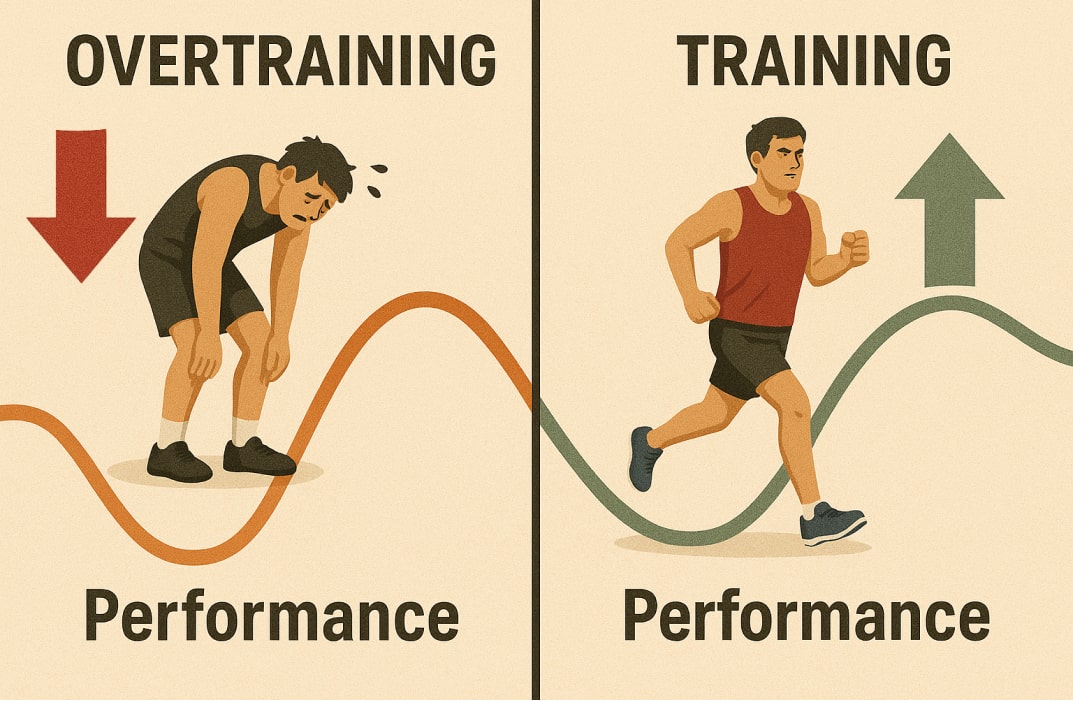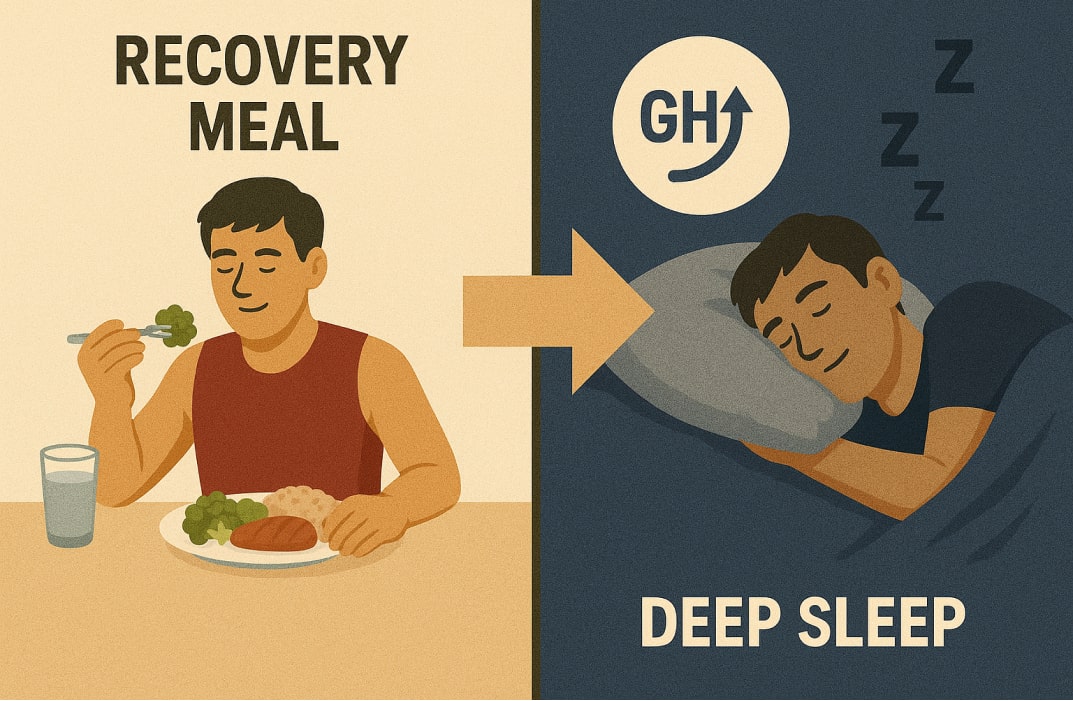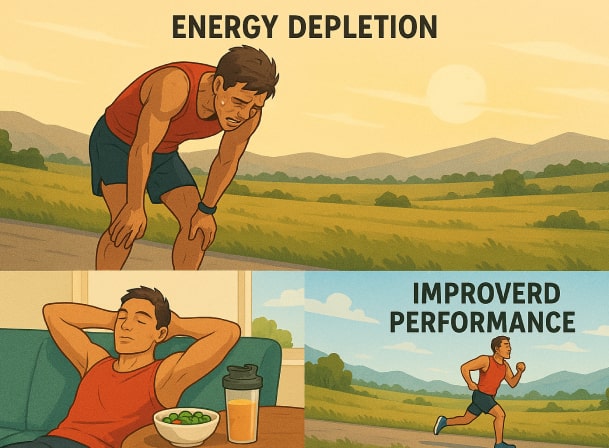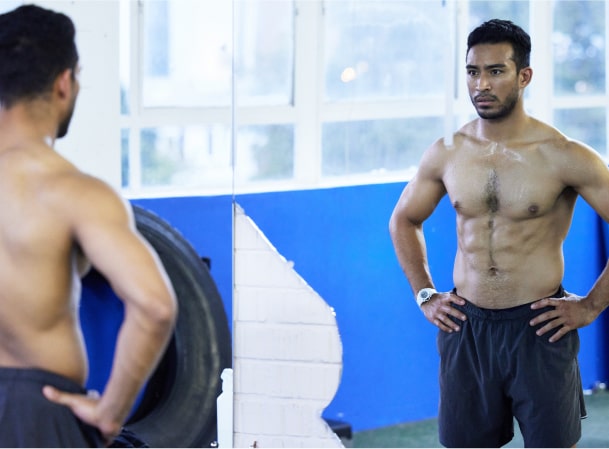Have you ever noticed that when athletes begin their training, some workouts feel brutal in the moment, but a few days later, you feel stronger, faster, or more capable than before? That’s not just in your head—it’s your body going through a fascinating process called supercompensation.
Supercompensation refers to the body’s ability to adapt and improve after being exposed to a training stimulus. In simple terms, when you challenge your muscles, cardiovascular system, or energy stores through intense workouts, your body doesn’t just recover—it adapts to perform better next time. This principle is a cornerstone in sports science theory and is essential for anyone serious about high performance, whether you’re a strength athlete, a runner, or a team sport player.
At its core, supercompensation training is about balancing training stress with adequate recovery. Too little stress, and your body never adapts. Too much stress without proper recovery, and you risk declining performance or even injury. Understanding this balance is key to unlocking the theory of supercompensation and reaching a higher level of fitness.
What is Supercompensation?
At its simplest, supercompensation is your body’s way of saying, “I got this!” after a challenging workout. When you apply a training stimulus—whether it’s lifting weights, running, or cycling—you temporarily push your body beyond its current capacity. This creates training stress, which initially causes fatigue and a slight drop in performance.
Here’s where the magic happens: during the recovery period, your body undergoes a regeneration process. Energy stores are replenished, muscles repair, and physiological systems adapt to handle future stress more efficiently. If done correctly, this leads to a supercompensation phase, where your performance is actually higher than your baseline level. In simple terms, your body doesn’t just bounce back—it comes back stronger.
This is the essence of the supercompensation principle: the combination of stress, recovery, and adaptation. Ignoring any part of this cycle can result in declining performance or even overtraining, so understanding how it works is crucial for designing a smart training program or training plan.
Training, Recovery, and Supercompensation Phases
By understanding these phases, you can design supercompensation training that maximizes gains while minimizing the risk of fatigue or overtraining. Whether you’re following a strength training program, endurance workouts, or team sport conditioning, timing your workouts around these phases ensures you’re always training at the optimal point for improved performance.
The Supercompensation Curve Explained
-min.jpg)
If you’ve ever seen a graph of performance over time after training, you might have noticed a wavelike pattern. This is the famous supercompensation curve, a visual representation of how the body responds to training stress, recovery, and adaptation. Think of it as your body’s way of riding a sinusoidal wave toward high performance.
The curve illustrates four main phases:
- Phase 1 – Training (Fatigue Phase)
- The moment you apply an intense training stimulus, your energy stores deplete and muscles experience microtrauma.
- Performance temporarily drops below your base level.
- Phase 2 – Recovery Period
- Proper recovery time allows the regeneration process to begin.
- Active recovery sessions like stretching, light cardio, or mobility work can accelerate adaptation.
- Energy stores are replenished, and the body prepares to overcompensate.
- Phase 3 – Supercompensation Phase (Peak Performance)
- This is the sweet spot: performance exceeds the original base level.
- Muscles are stronger, endurance is improved, and your adaptive response is at its peak.
- This is the ideal moment to schedule your next training session to maximize supercompensation benefits.
- Phase 4 – Declining Performance
- If you miss the timing and don’t apply a new training stimulus, your body gradually returns to baseline.
- Performance may even drop slightly below the original level if adaptation isn’t reinforced.
Table: Supercompensation Curve Phases
Understanding this curve is crucial because it allows you to time your workouts perfectly. Whether you’re designing a strength training plan, an endurance cycle, or a team sports program, respecting the supercompensation principle ensures each session leads to the phase 1 adaptive response and higher performance.
4. How Supercompensation Works in Training
Now that you understand the supercompensation curve, let’s dive into the actual process of how it works in real-world training. At its core, supercompensation is about how the body responds to stress, recovers in the first phase, and then adapts to a higher level of performance.
Here’s the sequence:
- You train hard (stress phase).
- A training stimulus is applied through a tough workout—like heavy squats, long-distance running, or high-intensity intervals.
- This creates training stress and leads to fatigue.
- The recovery period begins.
- During this time, your muscles repair, energy stores are replenished, and your body adapts to handle the same workload better next time.
- Key factors here include nutrition, recovery time, sleep, and active rest.
- Supercompensation occurs.
- After proper recovery, your body enters the supercompensation phase, where you achieve improved performance.
- If you apply another training stimulus at this stage, you ride the wave of adaptation to reach a higher level of fitness.
- If mistimed, performance declines.
- Training too soon → risk of overtraining.
- Training too late → adaptive response fades.
Factors Affecting Super compensation
Practical Example: Strength Training
Imagine an athlete doing heavy strength training (deadlifts and squats).
- Day 1: The athlete feels exhausted; performance drops (fatigue phase).
- Day 2–3: Proper nutrition, mobility work, and active recovery sessions begin the regeneration process.
- Day 4–5: The body enters the supercompensation phase—muscles are stronger, performance is improved.
- Day 6+: If no new training is added, the athlete risks declining performance.
5. When to Use Supercompensation in Your Training
Knowing what supercompensation is only half the battle. The real secret lies in understanding when to use it in your training program. Timing is everything. Train too early, and you’ll still be in the recovery period; train too late, and your adaptive response fades away.
So, when should athletes apply the supercompensation principle?
Best Scenarios for Supercompensation Training
- Strength Training Cycles
- Perfect for building raw strength and hypertrophy.
- Example: heavy lifting followed by rest, leading to a supercompensation phase where you can lift heavier.
- Endurance Preparation
- For runners, swimmers, or cyclists preparing for a race.
- Example: a hard long run followed by active rest, helping athletes run faster in the next training session.
- Sports-Specific Training
- Team sports (like football, basketball, or hockey) often plan training to peak before competitions.
- Coaches strategically use the supercompensation curve to ensure athletes hit high performance levels during playoffs or big events.
Signs You’re Ready for Your Next Training Session
Instead of guessing, watch out for these signs that your body has adapted and is ready to train again:
- You feel energetic instead of fatigued.
- Muscle soreness is reduced or gone.
- Sleep and appetite are normal.
- Performance indicators (like lifting weight, running pace, or endurance) show improvement.
- Mentally, you feel motivated and ready to train hard again.
Why Timing Matters
- Train too soon → you’re still fatigued → risk of overtraining and declining performance.
- Train at the right time → you hit the supercompensation phase → improved performance.
- Train too late → your body slips back to its base level → missed adaptation opportunity.
Supercompensation in Different Training Styles

The beauty of the supercompensation principle is that it’s not limited to one sport or training method. Whether you’re doing strength training, running marathons, or playing on a team, the same process applies—stress, recovery, and adaptation. The difference lies in how you apply it to your training program.
1. Supercompensation in Strength Training
- How it works: Heavy training sessions (like squats, deadlifts, or bench presses) create micro-tears in the muscles. With proper recovery, the body adapts, and muscles grow stronger.
- Best practice: Schedule your next heavy session when the body enters the supercompensation phase, usually 48–72 hours later.
Example:
A lifter does an intense leg workout on Monday. By Thursday, after rest and active recovery sessions, the legs are not just recovered—they’re stronger, allowing for heavier lifts.
2. Supercompensation in Endurance Training
- How it works: Long runs, cycling, or swimming deplete energy stores and tax the cardiovascular system. During the recovery period, the regeneration process improves oxygen delivery and stamina.
- Best practice: Use gradually increasing loads (like progressive mileage in running) to hit peak performance without risking overtraining.
Example:
A runner does a 15 km run on Saturday. After 2–3 days of active rest, proper nutrition, and sleep, the runner can perform a 17 km run with less difficulty the following week.
3. Supercompensation in Team Sports
- How it works: Athletes in sports like football, basketball, or hockey face both strength and endurance demands. Coaches use supercompensation training to peak performance before key games.
- Best practice: Plan training load and recovery time so that athletes achieve high performance right before competition week.
Example:
A football team trains hard during preseason, followed by a deload week to let the body adapt. When competition begins, players hit their supercompensation period, ensuring improved performance.
Supercompensation in Different Training Styles
The supercompensation curve is universal, but how you apply it depends on your training plan. By adjusting intensity, recovery, and timing, you can ensure your body adapts in the most effective way for your sport.
Common Mistakes Athletes Make with Supercompensation Sleep in Supercomp

While the supercompensation principle can skyrocket your performance, many athletes misuse it. Misunderstanding the supercompensation curve often leads to declining performance, burnout, or even injuries. Let’s break down the most common mistakes.
1. Training Too Soon
- Jumping into a new workout before the body adapts.
- Results in fatigue, poor performance, and higher risk of injury.
- Fix: Allow adequate recovery—listen to your body.
2. Waiting Too Long
- Missing the supercompensation period by delaying training.
- The body returns to base level, wasting the adaptive response.
- Fix: Use a training plan that times workouts around the supercompensation phase.
3. Ignoring Recovery
- Athletes often skip active rest, nutrition, and sleep, thinking more training = better results.
- Without the regeneration process, the body responds poorly to stress.
- Fix: Prioritize active recovery sessions, proper nutrition, and rest.
4. Training Hard Without Structure
- Random training sessions with no progressive overload or monitoring.
- Leads to overtraining and inconsistent results.
- Fix: Follow a structured training program based on sports science theory.
5. Ignoring Individual Differences
- Every athlete’s recovery time is different. Some may bounce back in 48 hours; others need a week.
- Copying someone else’s training load often causes difficulty and declining performance.
- Fix: Track your own fitness, stress, and recovery period.
Mistakes vs. Solutions in Supercompensation Training
When athletes understand these pitfalls and avoid them, they can maximize the benefits of supercompensation, train smarter, and achieve high performance without unnecessary setbacks.
How to Implement Supercompensation in Your Training Plan
Knowing about the supercompensation principle is great—but how do you actually apply it in your training program? The goal is to balance training load and recovery time so your body adapts and hits peak performance at just the right moment.
Here’s how to do it step by step:
Step 1: Apply a Strong Training Stimulus
- Start with an intense training stimulus—something challenging enough to create training stress.
- This could be a heavy strength training session, a long run, or a high-intensity team practice.
- Tip: The stress must be tough enough to push you beyond your comfort zone but not so hard that you risk overtraining.
Step 2: Enter the Recovery Period
- After stress comes the recovery period—this is where the regeneration process begins.
- Use active recovery sessions like light cardio, yoga, or mobility work.
- Proper recovery includes:
- 7–9 hours of quality sleep
- Balanced nutrition (carbs to refill energy stores, protein for muscle repair)
- Stress management (breathing, stretching, mindfulness)
Step 3: Hit the Supercompensation Phase
- After enough recovery time, the body enters the supercompensation phase.
- This is when you should begin your next round of training.
- If timed correctly, your performance will rise above your base level.
Step 4: Repeat with a New Round of Training
- Use the sinusoidal wave approach: stress → recovery → supercompensation → repeat.
- Each phase builds on the previous one, leading to gradually increasing performance.
Sample Weekly Supercompensation Training Plan
By applying the supercompensation principle into your weekly or monthly training program, you’ll not only avoid declining performance but also recover and adapt to higher workloads, improve fitness, and push your ability to a whole new level.
The Role of Nutrition and Sleep in Supercompensation

The supercompensation principle isn’t just about how you train—it’s about how you recover. Even the best training plan won’t work if your nutrition during the workout period and sleep aren’t supporting the regeneration process. Think of training as planting a seed: without water (nutrition) and sunlight (sleep), it won’t grow.
Nutrition: Fuel for Recovery and Adaptation
When athletes finish an intense training stimulus, the body needs raw materials to rebuild.
- Carbohydrates: Refill energy stores (glycogen) so your body has fuel for the next workout.
- Protein: Repairs damaged muscles and helps with physiological adaptations.
- Fats: Support hormone regulation and long-term energy.
- Hydration: Water and electrolytes aid in recovery and prevent fatigue.
Sample Post-Workout Nutrition (Strength Training Example):
- Grilled chicken, rice, and vegetables
- A recovery shake with protein + carbs
- Hydration: water plus electrolytes
Sleep: The Hidden Supercompensation Booster
Sleep isn’t just “rest”—it’s where most of the adaptive response happens. During deep sleep, the body adapts by releasing growth hormone, repairing muscles, and restoring energy stores.
- 7–9 hours of sleep per night is essential.
- Naps (20–40 minutes) can boost recovery during heavy training weeks.
- Poor sleep → declining performance, increased fatigue, and missed supercompensation benefits.
Active Recovery + Rest
Aside from nutrition and sleep, adding active rest can make recovery more effective:
- Light cycling or swimming
- Yoga or stretching
- Foam rolling
- Walking outdoors
These activities, such as exercise, keep blood flowing, reduce stiffness, and support the regeneration process.
Recovery Essentials for Supercompensation
By focusing on nutrition, sleep, and recovery, athletes can maximize the supercompensation period, reduce risk of injury, and achieve improved performance consistently.
Benefits of Supercompensation for Athletes
So why should athletes care about supercompensation training? Because when applied correctly, it turns hard workouts into lasting improvement. The body responds to stress not by returning to the same base level, but by adapting to a higher level of performance.
Here are the main supercompensation benefits:
1. Improved Performance
- The core benefit: each cycle lifts your fitness above the previous point.
- Athletes can run faster, lift heavier, or perform longer with less fatigue
- Works across sports—whether you’re into strength training, cycling, or team games.
2. Reduced Risk of Overtraining
- By balancing training load with adequate recovery, athletes avoid declining performance and injury.
- Instead of constantly “training hard,” you give the body time to adapt.
3. Smarter Training Structure
- The supercompensation curve provides a sports science theory framework for building a structured training program.
- Athletes can plan training sessions and active recovery periods more effectively.
4. Long-Term Adaptation and Growth
- With repeated cycles, the body enters new levels of physiological adaptations.
- Over weeks and months, this results in consistent improvement and higher performance levels.
5. Better Competition Readiness
- Athletes can time the supercompensation phase to peak during important competitions.
- For example, a team can cycle training load so that players hit top form during championship week.
Key Benefits of Supercompensation
By embracing the supercompensation principle, athletes not only train harder but also train smarter. The result? More progress, less risk, and the ability to perform at a higher level when it matters most.
Supercompensation vs. Overtraining (Key Differences)
The supercompensation principle is all about balance: apply stress, allow recovery, and watch your body adapt. But if athletes ignore the recovery period and keep stacking training sessions without rest, they cross into overtraining—a state of fatigue, poor results, and sometimes even injury.
Let’s break down the differences.
Supercompensation: The Positive Cycle
- Stress + proper recovery = improved performance
- Performance follows a sinusoidal wave, but each cycle climbs higher than the last.
- Builds long-term physiological adaptations.
Overtraining: The Negative Spiral
- Stress + insufficient recovery = declining performance
- The body never fully restores energy stores or muscles.
- Leads to fatigue, difficulty performing, and even burnout.
Supercompensation vs. Overtraining
Signs You’re in Overtraining (Not Supercompensation)
- Constant fatigue even after rest.
- Declining strength, endurance, or speed.
- Frequent injuries or joint pain.
- Trouble sleeping or disrupted appetite.
- Low motivation or irritability.
Understanding the difference between supercompensation and overtraining ensures athletes train smarter, not just harder. The goal is steady adaptation, not endless fatigue.
Supercompensation Curve Explained (Visualizing Progress)
At the heart of the supercompensation principle lies the supercompensation curve—a visual way to understand how your body responds to stress, recovery, and adaptation. Think of it as a sinusoidal wave that shows the journey from training stimulus to improved performance.
The 4 Phases of the Supercompensation Curve
- Phase 1: Training Stimulus (Stress Phase)
- Begins with a challenging workout (lifting, running, cycling, etc.).
- The body enters a temporary decline in performance because of fatigue and energy depletion.
- Phase 2: Recovery Period
- The regeneration process begins—muscles repair, energy stores refill, fatigue decreases.
- This is where active recovery sessions, nutrition, and sleep are crucial.
- Phase 3: Supercompensation Phase
- Performance doesn’t just return to baseline—it rises above it.
- The body adapts, becoming stronger, faster, or more enduring.
- This is the best time for a new training session.
- Phase 4: Decline Back to Base Level
- If no new training stimulus is applied, the body returns to its original level.
- The opportunity for adaptive response is lost.
Supercompensation Curve at a Glance
Why the Curve Matters
- Train too early → still in recovery → declining performance.
- Train too late → curve drops back to baseline → no progress.
- Train at the peak → higher level of performance → real supercompensation benefits.
The supercompensation curve explains why timing is everything. By syncing your training plan with the curve, you ensure each cycle takes you to a higher level, rather than leaving you stuck at the same point—or worse, sliding backward.
How Coaches Use Supercompensation in Sports Training
For athletes, understanding supercompensation is helpful—but for coaches, it’s essential. Successful coaches don’t just focus on working athletes harder; they use the supercompensation principle to design smarter training programs that maximize performance at the right time.
1. Planning Training Cycles
- Coaches design training plans using cycles (micro, meso, and macro cycles).
- Each cycle applies training stress, followed by adequate recovery, so athletes hit the supercompensation phase repeatedly.
- Example: A coach may program 3 weeks of gradually increasing load, followed by a deload week to let the body adapt fully.
2. Timing Peak Performance
- In team sports, coaches often use the supercompensation curve to prepare athletes for major games.
- In individual sports like running or swimming, training is structured so athletes perform at a higher level during races.
- This ensures athletes peak at the right moment instead of burning out early.
3. Using Active Recovery Sessions
- Coaches emphasize the importance of active rest between intense training sessions.
- Activities like mobility drills, light swimming, or cycling prevent declining performance and speed up the regeneration process.
4. Monitoring Athlete Response
- Every athlete recovers differently, so coaches track performance metrics (heart rate, pace, weights lifted, fatigue levels).
- This helps them adjust training load and recovery time for each athlete’s ability.
5. Preventing Overtraining
- Coaches use supercompensation training to balance stress and recovery.
- Without this balance, athletes risk overtraining, which hurts both body and mind.
Practical Tips for Athletes to Apply Supercompensation
Understanding the supercompensation principle is one thing—actually applying it in your training program is another. The good news? With a few smart strategies, you can take advantage of the supercompensation curve and optimize your workouts to see consistent improvement in performance.
1. Track Your Training and Recovery
- Keep a simple log of workouts, sleep, nutrition, and energy levels.
- Helps you identify your recovery period length and the best time to train again.
2. Use Active Recovery Sessions
- Instead of doing nothing, try low-intensity activities: walking, yoga, or cycling.
- Promotes circulation, speeds up the regeneration process, and reduces stiffness.
3. Listen to Your Body
- If you feel constant fatigue, soreness, or lack of motivation, you may be skipping the supercompensation phase.
- Adjust training load accordingly.
4. Prioritize Sleep and Nutrition
- Aim for 7–9 hours of sleep every night.
- Fuel your body with a balance of carbs, proteins, and healthy fats to support muscle repair and refill energy stores.
5. Schedule Training Cycles
- Use the stress → recovery → supercompensation loop as a guide.
- Don’t train at random—build a structured training plan.
6. Avoid Comparing Recovery with Others
- Every athlete’s recovery time is unique.
- What works for a teammate or training partner may not work for you.
7. Work with a Coach if Possible
- Coaches can help identify your ideal training stimulus and supercompensation period.
- Especially valuable for competitive athletes aiming for peak performance.
Why Supercompensation Matters in Training
The supercompensation principle is one of the most important concepts in sports science theory—yet many athletes overlook it. It’s not just about training harder, it’s about training smarter. By respecting the cycle of training stress, recovery time, and the supercompensation phase, athletes can unlock consistent improvement, avoid overtraining, and reach higher levels of performance.
Think of it as a partnership with your body. Every intense training session is an investment. The regeneration process is the return. If you let your body adapt fully, you don’t just get back to your baseline—you come back stronger, faster, and more resilient
92% trainers worldwide gave us 5 stars
Talk to your dedicated success manager and launch your branded fitness app during the demo in minutes.
Start your paid subscription for $79 FREE





%20to%20Become%20a%20Certified%20Personal%20Trainer-min.jpg)





